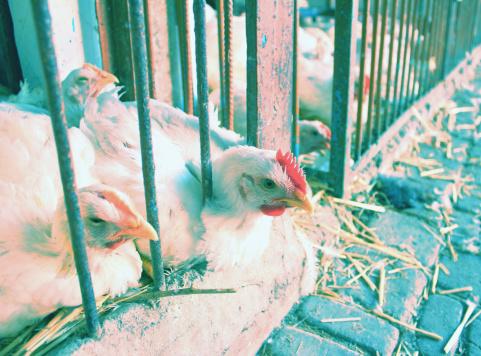Chinese health authorities today announced the first new H7N9 avian flu case since the middle of August, involving a 35-year-old man from Zhejiang province who is hospitalized in critical condition.
A statement from the provincial health department said the man is a company employee from Shaoxing County who was hospitalized on Oct 8, according to Xinhua, China's state news agency.
The man's infection raises the global number of H7N9 infections to 136, which includes 45 deaths. The August case was in a 51-year-old woman who works with poultry and was confirmed as Guangdong province's first H7N9 infection.
Hong Kong's Centre for Health Protection (CHP) said in a statement today that the mainland's National Health and Family Planning Commission notified it about the new H7N9 case in Zhejiang province. The CHP said the man's current condition is serious. The report did not include any details about how the man may have been exposed to the virus.
Zhejiang is the Chinese province with the highest number of H7N9 cases, and its last illnesses were reported in April. One H7N9 case was in a Taiwanese man; the rest have been in residents of mainland China.
Global health groups have said they expect sporadic infections to occur in humans, given that the source of the virus appears to be market poultry, though the link isn't definitive. Influenza experts have said it's not clear if human H7N9 infections could spike again with the arrival of cooler temperatures, a pattern commonly seen with seasonal flu strains and other avian influenza viruses like H5N1 that circulate in poultry.
Experts have said the drop seen in the spring might reflect the impact of poultry market closures and safety measures, or that the virus could have burned itself out.
The World Health Organization (WHO), in its Oct 7 report on flu at the human-animal interface, said knowledge about the main virus reservoirs and its extent in poultry remains limited. It added that, because it causes only subclinical infections in poultry, H7N9 could still be circulating in China and maybe its neighbors.
"As such, reports of additional human cases and infections in animals would not be unexpected, especially as the Northern Hemisphere autumn approaches," the agency said.
Sporadic cases and even small clusters wouldn't be surprising in previously affected areas and possibly neighboring regions, the WHO said, adding that the current likelihood of community H7N9 spread is low.
The WHO urged China and bordering areas to continue vigilance for the virus, and it advised countries to continue surveillance and other preparedness actions, including ensuring adequate lab capacity to detect the virus.
In its latest global flu update yesterday, the WHO reported that flu activity is low in most regions of tropical Asia except for Hong Kong, which saw increased activity due to H3N2. The agency also noted that flu activity remained at interseasonal levels in southern China, though the number of flu virus detections was higher this year during the period compared with last year.
Meanwhile, preparedness activities are continuing at the global and country levels. For example, WHO flu vaccine advisers in late September recommended an H7N9 strain for vaccine development, and late last month, just before the federal government shutdown, the US Centers for Disease Control and Prevention released its first H7N9 antiviral prophylaxis guidance and updated its treatment recommendations.
See also:
Oct 15 Xinhua story
Oct 15 Hong Kong CHP statement
Oct 7 WHO influenza at the human-animal interface report
Oct 14 WHO global flu update




















